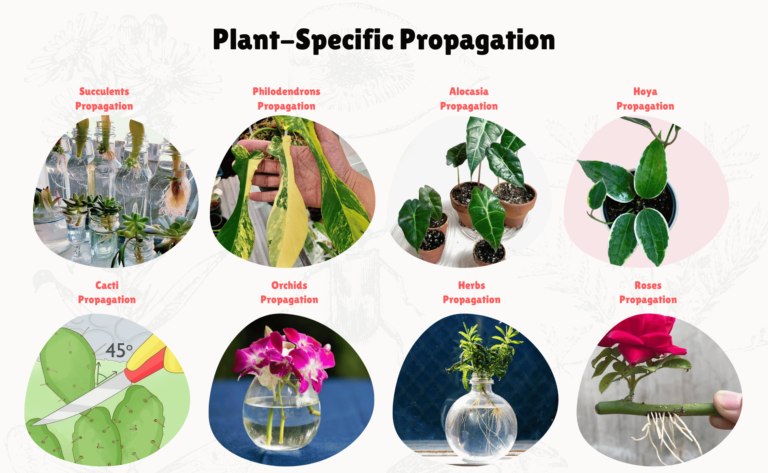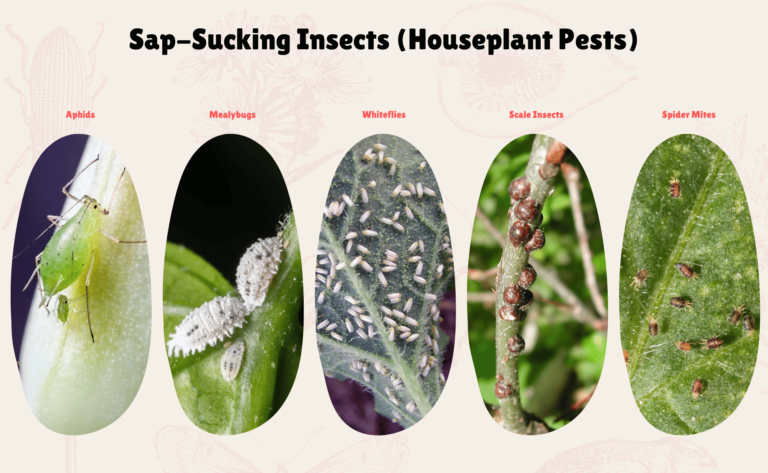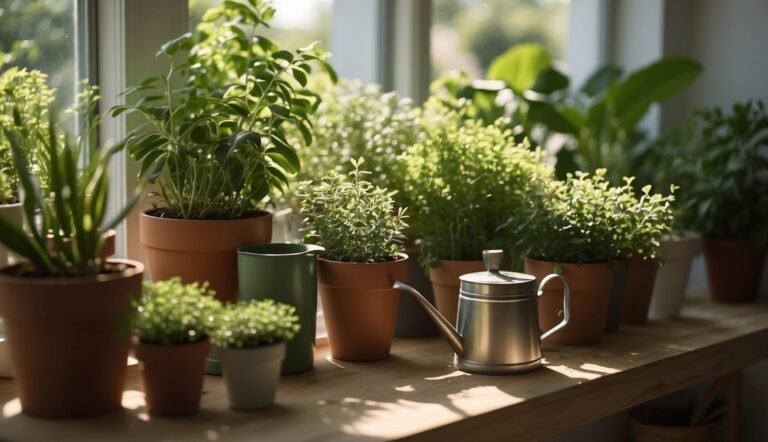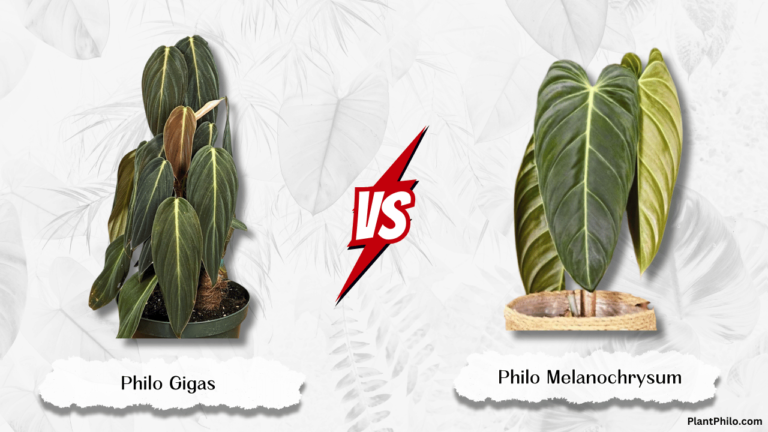Gloriosum White Vein Information on Philodendron: Care Guidelines and Unique Features
If you are interested in unique and beautiful houseplants, the Gloriosum White Vein Philodendron is a plant you will want to learn about. The Philodendron Gloriosum White Vein is known for its large, heart-shaped velvet leaves and the striking white veins that run across its deep green surface.
This feature makes it stand out from other varieties and adds a touch of elegance to any indoor space.

I am always looking for plants that bring style as well as easy care to my collection. The Gloriosum White Vein meets both needs.
As a crawling, terrestrial plant, it naturally grows along the surface, which gives it a unique look compared to upright philodendrons. If you are looking for a collector plant that draws attention, this one is worth considering for its rare qualities and visual appeal.
The white veins don’t just offer beauty—they also make it easier to spot this specific variety among other philodendrons. Mature leaves can grow quite large, sometimes reaching impressive sizes up to 70 cm in length.
If you want a houseplant with both texture and striking color contrast, this variety is an excellent choice for your indoor garden. For more details, you can check out information from The Tropic Gardener on the Philodendron Gloriosum White Vein.
Overview of Philodendron Gloriosum White Vein

The Philodendron Gloriosum White Vein stands out for its beautiful heart-shaped leaves with a velvety texture and striking white veins. This plant’s unique appearance, along with its creeping growth pattern and specific natural origins, makes it a distinct and sought-after specimen for collectors and indoor gardeners.
Taxonomy and Classification
I recognize the Philodendron Gloriosum White Vein as part of the Araceae family, which includes many popular houseplants. Its scientific name is Philodendron gloriosum, and it belongs to the genus Philodendron, known for its diverse foliage types.
This plant is a terrestrial species, meaning it grows along the ground, rather than climbing like many other philodendrons. It is notable for its low-growing habit and horizontal stem, or rhizome, which allows it to crawl across the soil.
There are several cultivars and variations of Philodendron gloriosum, but the “White Vein” is cherished for its pronounced vein coloration.
| Group | Classification |
|---|---|
| Family | Araceae |
| Genus | Philodendron |
| Species | gloriosum |
| Cultivar | White Vein |
Distinguishing Features
The key feature that makes this plant desirable is the striking white or cream-colored veins set against deep green, heart-shaped leaves. The leaves can grow impressively large—sometimes up to 18 inches long—with a velvety, soft surface that feels almost plush to the touch.
I often notice faint pink margins along the edges, adding another layer of subtle color. Unlike upright or trailing philodendrons, this plant has a crawling, terrestrial habit, making it grow horizontally in a pot or across soil.
The combination of its size, velvet leaf texture, bold vein contrast, and pinkish tones really sets it apart in any collection. For anyone seeking a showpiece, the Philodendron Gloriosum White Vein is known for its eye-catching appearance and unique leaf patterns.
Origins and Natural Habitat
The Philodendron Gloriosum White Vein comes from Colombia and is native to humid, tropical environments. It naturally grows in lowland rainforests where it crawls along the forest floor, shaded and protected from harsh sun.
This natural habitat explains the plant’s preference for indirect light and well-draining, moist soil when grown indoors. I make sure to recreate these rainforest conditions by providing warmth, humidity, and regular watering, but I keep it out of direct sunlight to avoid leaf damage.
The plant’s growth along the ground helps it access nutrients and moisture efficiently. For more information about how its native habitat influences its care, visit this source on Philodendron Gloriosum.
Growth and Care Requirements

Healthy Philodendron Gloriosum with white veins need the right amount of light, the correct soil, careful watering, and proper feeding. Paying attention to these key factors helps me encourage steady growth and keep the unique vein color strong.
Optimal Light Conditions
I keep my Philodendron Gloriosum in a spot with bright but indirect sunlight. Direct sun can scorch the leaves and fade the white veins, so filtered light is best.
Spaces near an east- or north-facing window work well because the plant gets enough light without strong midday sun. If I see that the leaves are turning yellow or the veins are less visible, it is often because there is too much sunlight.
In a low-light spot, leaf growth may slow, and the plant can look leggy. I try to keep light levels steady all year.
Using sheer curtains or setting the plant back from the window helps protect it from harsh rays. More about proper lighting can be found at Gardenia’s Gloriosum care page.
Watering Strategies
I always let the top few inches of the soil dry out before I water my plant again. Philodendron Gloriosum does not like to sit in soggy soil, which can lead to root rot.
I check the soil with my finger and only water when it feels dry to the touch. I use lukewarm, filtered water to avoid shocking the roots or leaving mineral deposits.
During hot months, my plant usually needs water once a week, but in winter, watering can drop to two to three weeks. Drooping leaves can mean either too much or too little water, so I feel the soil before making changes.
High humidity also helps the plant thrive, and I keep levels above 50 percent for best results, as suggested by The Spruce guide.
Quick Watering Checklist
- Check soil before every watering
- Drain excess water
- Increase humidity if tips turn brown
Ideal Soil Mix
My Philodendron Gloriosum needs soil that drains quickly but holds some moisture. I use a mix for aroids made of peat, perlite, and orchid bark, which keeps the soil light and prevents roots from getting waterlogged.
The pH should be slightly acidic to neutral, between 5.5 and 7. A typical mix I use is:
| Ingredient | Purpose |
|---|---|
| Peat Moss | Moisture, organic matter |
| Perlite | Drainage, aeration |
| Orchid Bark | Structure, root support |
Adding extra perlite can help if I notice the soil stays wet for too long. Sometimes, I include a bit of charcoal to keep the mix fresh.
More about mixing soil for Gloriosum appears in Rooted Hues’ care guide.
Fertilization Guidelines
I feed my Gloriosum about once a month during spring and summer. I use a balanced, water-soluble fertilizer that is diluted to half strength to avoid burning the roots.
In fall and winter, I cut back on feeding since the plant’s growth naturally slows down. Too much fertilizer can cause leaf burn and damage the roots.
If I ever see brown edges or yellow leaves, I flush the soil with water to remove any buildup. Carefully following a regular feeding schedule supports steady, healthy leaf growth, while skipping feedings in the cooler months avoids stressing the plant.
Propagation and Maintenance
Taking care of Philodendron Gloriosum White Vein is straightforward if I follow a few specific steps. Proper propagation, careful pruning, and early detection of problems help me keep my plant healthy and thriving.
Propagation Techniques
To propagate my Gloriosum White Vein, I usually use stem cuttings taken from the rhizome. The rhizome grows horizontally along the soil.
I make sure to choose a healthy part of the plant that has at least two leaves and a couple of nodes. Nodes are where new roots will form.
I cut the rhizome with a clean, sharp knife and let the cutting dry out for a few hours. This helps prevent rot.
Then, I place the cutting in water or directly in moist, well-draining soil. I’ve found that water propagation makes it easy to see root growth, though it can take a few tries to succeed.
Keeping the cutting in bright, indirect light helps encourage root development. For more detail, I follow specific propagation advice to get good results.
Pruning Methods
Pruning keeps my plant looking neat and encourages healthy growth. I remove any dead, yellow, or damaged leaves regularly.
This helps prevent disease and keeps energy focused on strong parts of the plant. I use clean scissors and make cuts close to the main rhizome without damaging it.
I don’t need to prune often, as this plant doesn’t grow quickly. When my Gloriosum gets too large or starts looking straggly, I trim back the leggy stems.
This is usually all the pruning this plant needs. Simple steps make a big difference, as described in professional pruning guides.
Common Issues and Solutions
Philodendron Gloriosum White Vein can develop a few common problems. Overwatering is the most frequent issue.
I always let the top inch of soil dry out before watering again. Brown leaf tips can signal low humidity, so I sometimes mist the leaves or place a humidifier nearby.
Pests like spider mites and mealybugs sometimes appear. I inspect my plant often and use insecticidal soap if I spot any pests.
If the leaves start to turn yellow, it could be a sign of poor drainage or too much sunlight. I keep my Gloriosum in bright, indirect light, as recommended in detailed care instructions, to keep leaves healthy and prevent sunburn.
Regular checks help me quickly solve most problems.
Design and Display Ideas
Philodendron Gloriosum ‘White Vein’ stands out with its large, velvety, heart-shaped leaves and bright white veins. I find this plant easy to display, either as a focal point or part of a group.
Indoor Decor Inspiration
When I’m decorating with Philodendron Gloriosum ‘White Vein’, I focus on lighting and placement. I keep it in a spot where its unique leaf veins catch natural light, like near a bright window, but out of direct sun.
Too much direct sun can damage the leaves and fade their color. I use a wide, shallow pot to let the plant crawl across the surface.
Velvet leaves look extra striking against a plain ceramic or matte black planter. For an eye-catching display, I place the pot on a console table or a plant stand that’s about waist level.
When I’m decorating small spaces, I set the pot on a bookshelf, letting new leaves drape softly over the edge.
Here is a quick display checklist:
- Bright, indirect light
- Shallow, wide planter
- High-contrast pot color
- Elevated placement to show leaf shape
Pairing With Other Plants
I like to pair the ‘White Vein’ Gloriosum with plants that have different shapes or textures. For example, I might set it next to compact, upright plants like snake plants or small peace lilies.
This mix draws attention to the Gloriosum’s crawling habit and large, soft leaves. Grouping Philodendron Gloriosum beside trailing vines or ferns creates a lush, layered look.
The bold leaves of the Gloriosum make a good backdrop for delicate textures. When arranging, I keep enough space for the Gloriosum to spread, since it’s a creeping plant and needs room to grow, as shared by Uprooted’s care tips.
To keep all plants healthy, I check that each is suited to similar humidity and light conditions. This way, my arrangement looks neat and each plant thrives.
Frequently Asked Questions
I focus on care methods, differences between similar plants, leaf appearance, and key growing conditions for Philodendron Gloriosum. I also address variety differences and tips for soil and water needs.
How do I care for a Philodendron Gloriosum to ensure optimal growth?
I keep my Philodendron Gloriosum in a spot with bright, indirect light. I water it when the top inch of soil feels dry.
For best results, I use a well-draining chunky mix, such as peat and perlite or orchid bark. High humidity, around 60-80%, also helps my plant look its best.
What are the differences between Philodendron Gloriosum and Philodendron Glorious?
Philodendron Gloriosum is a true species with heart-shaped leaves and a creeping growth pattern along the soil. Philodendron Glorious, on the other hand, is a hybrid between Gloriosum and Philodendron melanochrysum.
Its leaves are usually thinner, more elongated, and the plant tends to climb, while Gloriosum spreads horizontally.
Can you describe the variegation patterns found on Philodendron Gloriosum leaves?
The Philodendron Gloriosum “White Vein” form has dark green leaves with striking white or light green veins. The contrast is especially noticeable on mature plants.
Most Gloriosum varieties do not show other types of variegation, and the vein color helps distinguish different forms, such as the white vein type.
What light conditions are ideal for a Philodendron Gloriosum?
I make sure my plant receives bright but indirect sunlight. Direct sun can cause its leaves to burn, while too little light slows growth and reduces leaf size.
A north or east-facing window, or a few feet back from a brighter window, is usually just right.
How do Philodendron Gloriosum ‘Pink Princess’ and ‘Pink Back’ differ?
‘Pink Princess’ is actually another species, Philodendron erubescens, famous for leaves with pink variegation. Philodendron Gloriosum ‘Pink Back’ refers to a Gloriosum form with pinkish hues on the undersides of its leaves, but the top remains green with white veins.
They differ in both appearance and species background.
What are the specific requirements for Philodendron Gloriosum soil and watering?
I use a chunky, airy soil mix to allow roots to breathe and prevent rot. I make sure the pot has drainage holes.
Watering always depends on the dryness of the soil’s top layer; if it feels dry to the touch, it’s time to water. Overwatering often leads to root rot, so I am careful not to keep the soil soggy.




